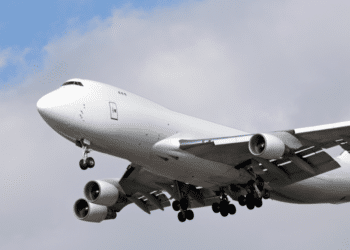January results are in – do they tell us anything?

However, while the data from individual carriers and airports must be treated with caution, there is still useful information to be gleaned. For example, look at the numbers from Cathay Pacific Airlines and Hong Kong International Airport. The airport saw a 5.3% increase in cargo volume in January, while Cathay, which is based in Hong Kong, reported its traffic down 4.0%. The implication is that Cathay is losing market share at its home airport. Likewise, while Pactl, the main handler at Shanghai Pudong (PVG), saw its volume go up almost 15%, Shanghai-based China Eastern’s cargo traffic was essentially flat with January 2013.
Turning to Europe, Lufthansa continued to report better results than its two major competitors, Air France-KLM and IAG; and Turkish Airlines continued to report gains that almost make it seem to be operating on some other planet. In the Americas, the 2013 trend of US-based American Airlines outperforming its main competitors continued into 2014. And while the only result so far available from the Middle East is the 18.9% gain reported by Abu Dhabi International (AUH), it does indicate that the region’s carriers (and Turkish) are still taking market share from carriers in Asia and Europe.
Now for the details…
Asia Pacific
Cathay Pacific Airways reported January cargo traffic down 4.0% y-o-y to 753 million RTKs. Commenting on the January traffic report, Cathay Pacific General Manager Cargo Sales & Marketing Mark Sutch said: “The markets softened quite sharply after the pre-Christmas peak and we didn’t see any significant surge in demand prior to Chinese New Year, though there were healthy imports of seafood and other perishable items into Greater China and North Asia in advance of the holidays. Demand fizzled out as the long holiday began in Mainland China and factories closed in other manufacturing centres in the region. We expect the pickup in February to be slow.”
Hong Kong International Airport reported cargo volume in January up 5.3%) y-o-y to 352,000 tonnes. Export volume was up8.2% over January 2013 to 228,000 tonnes, while import volume was almost flat (up 0.4%) at 124,000 tonnes.
Beijing-based Air China reported January cargo traffic down 6.0% y-o-y to 408 million RTKs. International traffic was down 6.8% to 274 million RTKs and domestic traffic was down 4.2% to 125 million RTKs.
Shanghai-based China Eastern Airlines reported January cargo traffic up 0.3% y-o-y to 382 million RTKs. International traffic was up 2.2% to 290 million RTKs, while domestic traffic was down 5.6% to 81 million RTKs.
Guangzhou-based China Southern Airlines reported January cargo traffic up 0.7% y-o-y to 362 million RTKs. International traffic was down 1.0% to 223 million RTKs, while domestic traffic was up 3.8% to 137 million RTKs.
Shanghai Pudong International Airport Cargo Terminals Co. Ltd (Pactl, the biggest cargo handler at PVG) reported its January handle up 14.8% y-o-y to 111,000 tonnes. For the month, Pactl’s international volume was up 15.8% to 106,000 tonnes, while the much smaller domestic volume rose 4.3% to 9,000 tonnes (most of Shanghai’s domestic cargo moves through nearby Hongqiao Airport). We caution against reading too much into this big increase, however, because air cargo movement into and out of China swings wildly from year to year in January and February depending on the timing of the Chinese Lunar New Year holiday. Last year, for example, Pactl’s cargo volume was up 17% in January and down 15% in February. Neither result was meaningful on its own, but the combined twe-month increase of 1% was roughly in line with industry trends.
Hong Kong Air Cargo Terminals (Hactl) reported its January handle down 36.6% y‑o‑y to 145,000 tonnes. The big decline is the result of Cathay Pacific’s move to its own cargo terminal at HKG last year. The move was completed in late September, and the y-o-y declines at Hactl since then have been fairly consistent at a little over 36%, indicating that Cathay (including Dragonair) accounted for over one-third of Hactl’s business.
Singapore Airlines reported January cargo traffic down 0.4% y-o-y to 510 million RTKs.
Europe & Middle East
Lufthansa Cargo reported its January traffic up 4.2% y-o-y to 607 million RTKs. For the Lufthansa Group as a whole, January cargo traffic was up 3.7% to 729 million RTKs. Lufthansa reported strong growth in air freight demand on the Asia-Pacific lane (up 8.9% to 328 million RTKs) Traffic on the carrier’s other major lane, the trans-Atlantic, also increased, though not as strongly, up 1.7% to 310 million RTKs. Lufthansa said the traffic increase was due “in particular to the increasing freight capacities of passenger aircraft.”
Air France-KLM reported January cargo traffic down 0.8% y-o-y to 773 million RTKs. A 3.3% gain in traffic to/from the Asia-Pacific region to 296 million RTKs was not enough to compensate for declines on the carrier’s other two major lanes. Traffic was down 2.1% on the trans-Atlantic trade lane to 321 million RTKs, and down 6.5% to 120 million RTKs to/from Africa and the Middle East. Air France said that cargo yield was down on a y-o-y basis, but did not indicate by how much.
International Airlines Group reported January cargo traffic up 0.2% y‑o‑y to 432 million RTKs. Subsidiary carrier British Airways reported cargo traffic up 1.4% to 353 million RTKs, while Iberia saw cargo traffic decline 4.8% to 79 million RTKs.
Turkish Airlines continues to report exceptionally strong results, with January cargo volume up 35.7% y‑o‑y to 48,000 tonnes.
Frankfurt Airport (FRA) reported its January freight handle up 7.2% y-o-y to 154,000 tonnes.
London’s Heathrow Airport (LHR) reported its January handle up 5.3% y-o-y to 112,000 tonnes.
Americas
The big three non-express carriers in the US reported mixed results in December, with. American Airlines and United Airlines reporting solid growth, while Delta Air Lines reported a decline. In the Southern hemisphere, LATAM (which carries more cargo than any of the US combination carriers) reported a slight gain.
LATAM Airlines Group reported January cargo traffic up 0.9% y-o-y to 351 million RTKs, as capacity declined 4.8%. The company said the decrease in capacity was “a result of a reduced freighter operation, in addition to decreased availability in the bellies of passenger aircraft, reflecting the challenging global cargo environment.”.
United Airlines reported January cargo traffic up 6.0% to 263 million RTKs.
Delta Air Lines reported January cargo traffic down 3.7% y-o-y to 246 million RTKs.
American Airlines reported January cargo traffic up 14.0% y-o-y to 254 million RTKs.
Learn more about the international air cargo market at Cargo Facts Asia, April 1-2 in Hong Kong. Click here for details.




